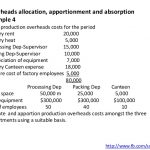
In addition to those mentioned before, they searched for profit calculator, profit margin formula, how to calculate profit, gross profit calculator (or just gp calculator), and even sales margin formula. Gross profit measures a company’s total sales revenue minus the total cost of goods sold (or services performed). Net profit margin also subtracts other expenses, including overhead, debt repayment, and taxes. Profit margin is a common measure of the degree to which a company or a particular business activity makes money. Expressed as a percentage, it represents the portion of a company’s sales revenue that it gets to keep as a profit, after subtracting all of its costs.
- You should also check your margins and markups regularly to ensure you’re getting the most out of your pricing and online marketplace presence.
- In this calculator, we are using these terms interchangeably, and forgive us if they’re not in line with some definitions.
- To calculate gross profit margin, you take the total sales revenue and subtract the cost of goods sold, as well as all other expenses, such as marketing, administration, and rent.
- One of which is understanding the financial side of things like learning about “what is margin?
- The sales margin is a crucial metric for businesses, as it provides an indication of profitability.
The net profit margin ratio is used to describe a company’s ability to produce profit and to consider several scenarios, such as an increase in expenses which is deemed ineffective. The typical profit margin ratio of a company can be different depending on which industry the company is in. As a financial analyst, this is important in day-to-day financial analysis. Investors can assess if a company’s management is generating enough profit from its sales and whether operating costs and overhead costs are being contained.
What is Sales Margin? and How to Calculate it
It is one of the first few key figures to be quoted in the quarterly results reports that companies issue. As you can see, the margin is a simple percentage calculation, but, as opposed to markup, it’s based on revenue, not on cost of goods sold (COGS). Does your business regularly buy and use the same supplies over and over? These could be for daily operations, to make goods, or even to ship products to customers.
The Sales Margin can also be calculated for group transactions, just like individual transactions. An example would be a software company that has sold its training software and support as a package deal to a client. In this case, it is required to calculate the margin on the entire package. Our partners cannot pay us to guarantee favorable reviews of their products or services.
Calculating Sales Margin
This is because margin considers the total revenue of the product, while markup only considers the COGS. This means that margin gives you a better idea of how much profit you’re actually making sales margin formula on a product. Markup is the difference between your cost of goods sold and your selling price. For example, if you sell a product for $100 and it costs you $60 to make, your markup is $40.

As such, it sheds light on how much money a company earns after factoring in production and sales costs. Profit margin is the percentage of revenue (income from sales) your business keeps as profit. It is one of the most common metrics used in accounting to determine your business’s health. Using profit margin is an easy way to compare your business with others in your industry. So the difference is completely irrelevant for the purpose of our calculations — it doesn’t matter in this case if costs include marketing or transport. Most of the time people come here from Google after having searched for different keywords.
The Difference Between Gross Margin and Net Margin
The word “margin” has many different definitions within different contexts, such as referring to the edge or border of something or the amount by which an item falls short or surpasses another item. Some industries — like food services — have high overhead costs and by extension low profit margins. Professional services industries — like accounting and attorneys — have lower overhead costs which result in high profit margins. Overall, though, a 5% margin is low, a 10% margin is average, and a 20% margin is good or high. So try to target a net profit margin between 15% and 20% in your business.
- Conversely, if you think your goal markup should be the margin, you can accidentally be pricing your products too high.
- In order to calculate it, first subtract the cost of goods sold from the company’s revenue.
- In the context of currency exchange, margin can be thought of as a good faith deposit required to maintain open positions, similar to a security deposit that is required for renting.
- Profit margin is a measure of how much money a company is making on its products or services after subtracting all of the direct and indirect costs involved.
- Gross profit margin is a better metric to use if you want to see the overall profitability of a company.
This may be misleading because the company could have significant cash flow but may seem inferior due to their lower profit margin. If a company has higher financial leverage than another, then the firm with more debt financing may have a smaller net profit margin due to the higher interest expenses. This negatively affects net profit, lowering the net profit margin for the company. Sales margin is a concept that is calculated by everyone from a retailer to a company CEO. Salaries, incentives, expenses of the employees, etc. of many companies depend on the Sales Margin.


